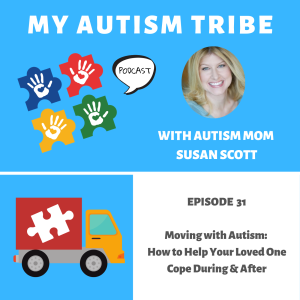
- Podcast Features
-
Monetization
-
Ads Marketplace
Join Ads Marketplace to earn through podcast sponsorships.
-
PodAds
Manage your ads with dynamic ad insertion capability.
-
Apple Podcasts Subscriptions Integration
Monetize with Apple Podcasts Subscriptions via Podbean.
-
Live Streaming
Earn rewards and recurring income from Fan Club membership.
-
Ads Marketplace
- Podbean App
-
Help and Support
-
Help Center
Get the answers and support you need.
-
Podbean Academy
Resources and guides to launch, grow, and monetize podcast.
-
Podbean Blog
Stay updated with the latest podcasting tips and trends.
-
What’s New
Check out our newest and recently released features!
-
Podcasting Smarter
Podcast interviews, best practices, and helpful tips.
-
Help Center
-
Popular Topics
-
How to Start a Podcast
The step-by-step guide to start your own podcast.
-
How to Start a Live Podcast
Create the best live podcast and engage your audience.
-
How to Monetize a Podcast
Tips on making the decision to monetize your podcast.
-
How to Promote Your Podcast
The best ways to get more eyes and ears on your podcast.
-
Podcast Advertising 101
Everything you need to know about podcast advertising.
-
Mobile Podcast Recording Guide
The ultimate guide to recording a podcast on your phone.
-
How to Use Group Recording
Steps to set up and use group recording in the Podbean app.
-
How to Start a Podcast
-
Podcasting
- Podcast Features
-
Monetization
-
Ads Marketplace
Join Ads Marketplace to earn through podcast sponsorships.
-
PodAds
Manage your ads with dynamic ad insertion capability.
-
Apple Podcasts Subscriptions Integration
Monetize with Apple Podcasts Subscriptions via Podbean.
-
Live Streaming
Earn rewards and recurring income from Fan Club membership.
-
Ads Marketplace
- Podbean App
- Advertisers
- Enterprise
- Pricing
-
Resources
-
Help and Support
-
Help Center
Get the answers and support you need.
-
Podbean Academy
Resources and guides to launch, grow, and monetize podcast.
-
Podbean Blog
Stay updated with the latest podcasting tips and trends.
-
What’s New
Check out our newest and recently released features!
-
Podcasting Smarter
Podcast interviews, best practices, and helpful tips.
-
Help Center
-
Popular Topics
-
How to Start a Podcast
The step-by-step guide to start your own podcast.
-
How to Start a Live Podcast
Create the best live podcast and engage your audience.
-
How to Monetize a Podcast
Tips on making the decision to monetize your podcast.
-
How to Promote Your Podcast
The best ways to get more eyes and ears on your podcast.
-
Podcast Advertising 101
Everything you need to know about podcast advertising.
-
Mobile Podcast Recording Guide
The ultimate guide to recording a podcast on your phone.
-
How to Use Group Recording
Steps to set up and use group recording in the Podbean app.
-
How to Start a Podcast
-
Help and Support
- Discover

EPISODE 31: MOVING WITH AUTISM
“How to help your loved one cope during and after a move.”
INTRODUCTION:
Hey, everyone! Thanks for joining My Autism Tribe. Today’s topic is how to help your loved one with autism cope during and after a move. As in, packing up an entire house and moving to an entirely different location. Stay tuned for some helpful tips! And as always, if you’re enjoying our podcast, please rate and review us wherever you listen to podcasts, and share with a friend. That’s how we make our voice stronger. Thanks for listening!
SEGMENT:
My son and I recently moved, and I have to say there’s a reason moving is considered one of the top five most stressful situations in life. I think the other four are divorce, job loss, illness, and the death of a loved one. It’s no secret as to why. Not only is it a complete hassle, but it disrupts your life in ways that push even the most organized, experienced and sane adults to their mental and physical limits. It’s a marathon, people.
And for a child, coping with the stress of moving is even more difficult. Maybe they also have to change schools, maybe there’s a co-occurring trauma happening like divorce. This is a lot, and a child’s still-developing brain is not equipped yet for the challenge of relocating their entire life. Sometime you can see immediate negative responses, like tantrums, outburst, trouble eating, not sleeping, and then others may respond more subtly over time, and can show up as depression or anxiety. We all know that every child is different, but for children with autism, the effects of moving can be even more pronounced. I wouldn’t say that moving is ever a pleasant experience, but there’s a little bit of good news. As a parent or caregiver, there are steps you can take throughout the move to make the experience easier for your child with autism. I’ve moved so many times with my son Alex, that I my process is like a well-oiled machine. Not kidding. This is almost embarrassing, but during the course of Alex’s short life (he just turned 6), we have moved a total of four times – two of those times were out-of-state moves. You get the picture. So…without further ado, let me share some tips with you, in the case that you are planning a move, or possibly anticipating a move.
Create a Narrative
Start with writing your own story. For children with autism, communication is critical. Put simply, you should explain to your child the who, what, when, where, why, and how of moving. Tell them where you’re moving and why. (Just be sure to be age-appropriate, of course) Let them know that the people and things they love and care about will be moving with them. Let them know when you’ll begin the moving process, how long it will take, and how you’ll pack, move, and unpack your things. And the whole time, use a positive tone that conveys that everything is going to be OK. Being aware of the process will allow your child to begin to understand it and, ultimately, come to terms with it.
One of my favorite ways of doing this is to create a social story — or even several stories — depicting the transition. Many children on the spectrum are visual learners who do better with concrete information, as opposed to abstract concepts. That’s why social stories work. They take specific situations that are difficult to grasp, like moving to a new home or changing schools, and explain them. What’s more, they walk the child through the emotions they may feel, how they might expect others to act during the process, as well as healthy responses to each.
When creating your own social story, consider these tips:
- Design your story to address one problem, situation, or desired outcome. Use different stories for different aspects of the move, like enrolling in a new school or taking a long car ride to the new home, to keep the story from being too long.
- When possible, use real pictures of your family, as well as your names and other personal details. Ask your real estate agent to send you photos from the new home to incorporate.
- Be truthful and accurate, but always speak in a positive tone. You should also highlight the positive aspects of the move — decorating a new bedroom, having a bigger backyard to play in, or being closer to activities and people they love, for example.
- Use simple language that is easy for your little one to understand and repeat.
- Have the child present the story to their family and friends as a way of building confidence around the situation.
In addition to the custom solution a social story provides, you can also use existing books, movies, and music to familiarize your child with the moving process from the eyes of another child, family, or even fictional character. Here’s how:
- Use your child’s favorite storytellers. If there is a series or character your child already loves, you can probably make a connection between your child’s situation and theirs. A simple online search will reveal whether the cast of Sesame Street, The Berenstain Bears, or Mister Rogers’ Neighborhood have ever had to move. (They have!)
- Introduce moving-specific storylines. There are dozens of book and movies out there written specifically to help children cope with relocating. Check them out from the library or order them online, and then just read, watch, and repeat.
In addition to talking to your child, you should also take the time to listen and observe. Most importantly, ask your child how he or she is feeling about the move. Even if your little one can’t put into words what they are feeling, chances are you know them well enough to discern what parts of the moving process are making them most anxious. Also, be on the lookout for new behaviors and different emotional responses at home or school. Every tantrum, outburst, or breakdown is another opportunity to reassure your child that everything will be OK.
Take Action
In addition to telling and showing your child how a move will affect them, there are some more steps you can take to ease them through the transition. Keep in mind that every child is different, and what calms one little person may trigger another. Use your best judgment and parental instincts to determine which of these ideas may benefit your kid, and don’t be afraid to change tactics mid-stride if your strategy doesn’t seem to be working.
During the move, pack your child’s belongings last, and unpack them first. Allow your child to help as much or as little as they feel comfortable. If they are anxious about all of their belongings making it to the new house, ask them to make a checklist of beloved items. Then, let them help you pack and label them. Consider investing in clear, plastic tubs instead of plain cardboard boxes. This way, your child can keep an eye on their stuff. You may even be able to transport a container of their special items in the car with you.
Your list of action items should also include creating a space in the new home where your child feels safe and comfortable. For some children, this may mean organizing and decorating their new room to mimic their old one. While the layout and size of the room will likely vary, taking care to position furniture, wall hangings, and toys in the same relative positions can help your little one regain a sense of familiarity in your new home. Other children may see a new room as a chance to choose new decor. Allowing them to choose a paint color or a new bedding set may be just the thing your child needs to get excited about his new space.
If your new home comes with a backyard, you may also want to invest some time and energy into creating an outdoor space specifically for your child with ASD before you move in or shortly after. Focus on activities that develop skills and stimulate their senses, like a sandbox, water table, or birdseed bin. It would help if you also designed an area of the space as a haven — somewhere your child can go when he or she is feeling overstimulated.
Ultimately, finding a new normal is going to take time. Even after everything is moved and unpacked, leave space for your child to change his or her mind. While you may not be able to repaint their room, you can rearrange it or replace their new comforter with their old, familiar one.
Consistency is Key
The more prepared your child is for each part of the journey, the more likely their acceptance of it. As you probably already know, that means repeating the narrative you’ve created over and over and over again. During a move, that’s going to be more difficult than usual. You’ll be busy packing, loading, unloading, and unpacking, not to mention completing all of the administrative tasks that come with moving. (Think address changes, projects around the house, and other odds and ends.) Just remember, the time and energy you spend helping your child understand the process will come back to you in the end in a great way. So, start early, repeat often, and — perhaps most importantly — don’t stop reassuring your child until they have adjusted to all of the changes in their lives. It’s gonna take some time for you as well, and that’s ok. Not every move for me has been a positive one, but I kept reassuring myself that no matter how difficult the process was, there was space to make a home at the end. And this home was going to be filled with love, and patience, and understanding. The new home would be a witness to the amazing achievements my son was going to make, and the strength that I would build. It’s all good! Take a deep breath, and take one box at a time.
Thanks for being a part of My Autism Tribe, and I’ll see ya next week!
More Episodes
 2019-09-30
2019-09-30
 2019-09-23
2019-09-23
 2019-09-16
2019-09-16
 2019-08-19
2019-08-19
 2019-08-12
2019-08-12
 2019-08-06
2019-08-06
 2019-07-22
2019-07-22
 2019-07-16
2019-07-16
 2019-07-01
2019-07-01
 2019-06-17
2019-06-17
 2019-06-11
2019-06-11
 2019-06-04
2019-06-04
 2019-05-20
2019-05-20
 2019-05-14
2019-05-14
Create your
podcast in
minutes
- Full-featured podcast site
- Unlimited storage and bandwidth
- Comprehensive podcast stats
- Distribute to Apple Podcasts, Spotify, and more
- Make money with your podcast
It is Free
- Privacy Policy
- Cookie Policy
- Terms of Use
- Consent Preferences
- Copyright © 2015-2025 Podbean.com




